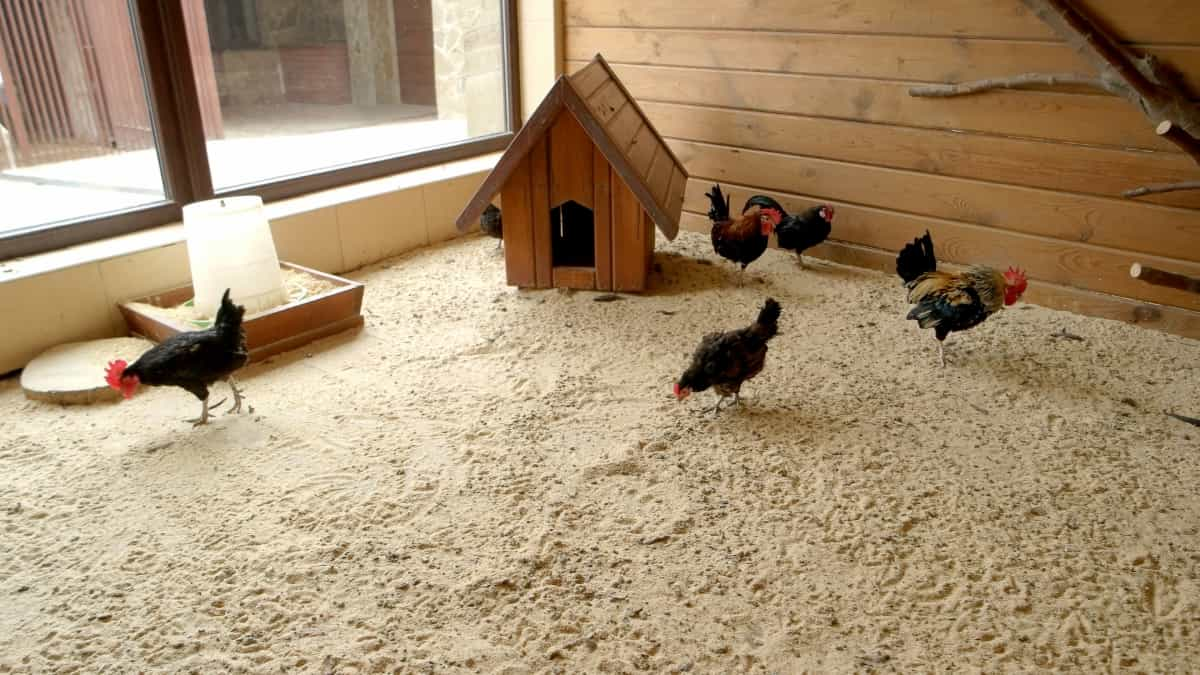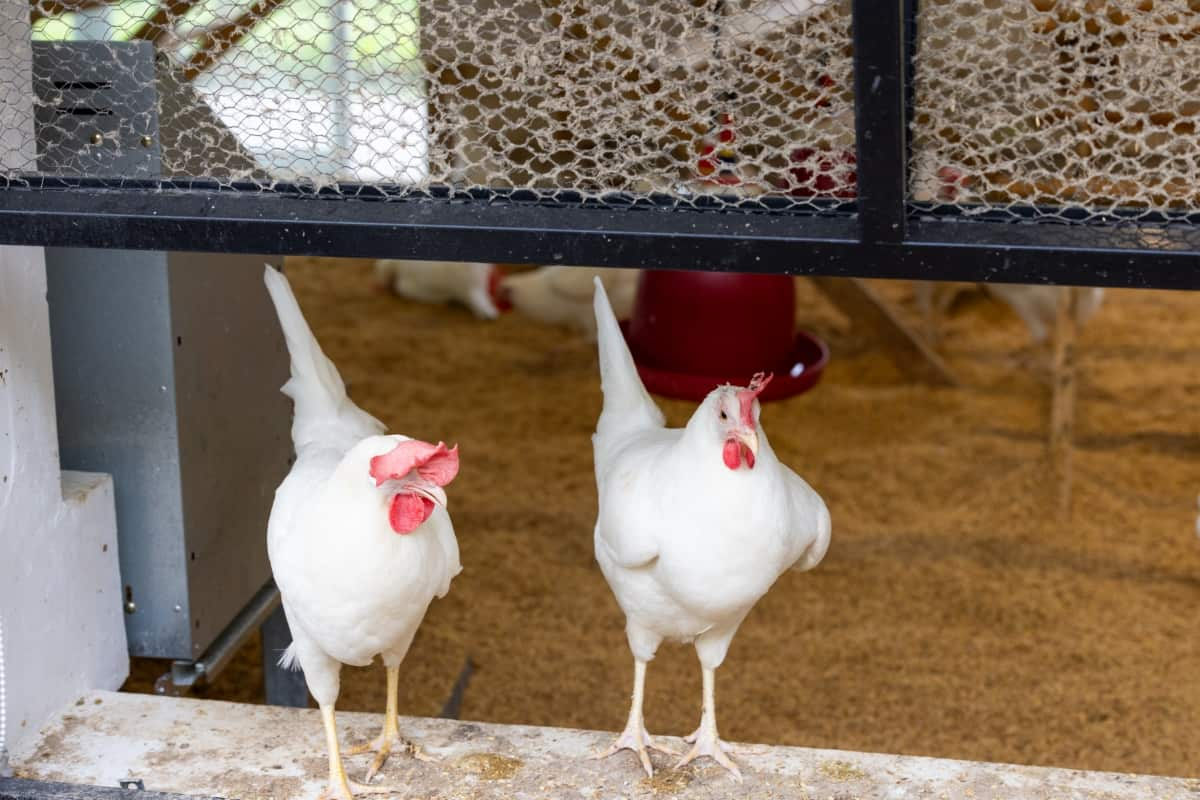Sand is a versatile option that offers numerous benefits for both you and your feathered friends. It provides excellent drainage, helping to prevent dampness and odor buildup in the coop. By using sand in your chicken coop, you can create a low-maintenance environment that makes cleaning easier and more efficient. Choosing sand as bedding material is not only practical but also cost-effective in the long run.

Guide to Using Sand in Your Chicken Coop
Overview of Sand as Bedding in Chicken Coops
Benefits of Using Sand in Your Chicken Coop
The main advantage of using sand as bedding in chicken coops is its excellent drainage properties. Sand allows moisture to pass through easily, keeping the coop dry and reducing the risk of bacterial growth. Additionally, sand provides chickens with a comfortable and clean surface to walk on. Another benefit of using sand is its longevity, unlike other bedding materials that need frequent replacement and can last much longer with proper maintenance, saving you time and money in the long run.
Comparing Sand to Other Bedding Materials
When it comes to choosing chicken coop bedding materials, sand stands out for its versatility and practicality. Unlike traditional options like straw or wood shavings, sand offers unique benefits that can enhance the comfort and cleanliness of your coop. Unlike straw, which can quickly become soiled and need frequent replacement, sand is easily sifted to remove waste while maintaining a dry surface for your flock. Additionally, unlike wood shavings, which can retain moisture and odors, sand promotes better drainage and airflow in the coop environment.
Types of Sand Suitable for Chicken Coops
Choosing the Right Sand for Coop Bedding
The key is to select a type of sand that promotes good drainage and is comfortable for your feathered friends. Opt for coarse builder’s sand or river sand instead of fine play sand, which can compact easily and retain moisture. These coarser sands allow for proper airflow and prevent issues like mold growth. Avoid using beach sand due to its salt content, which can be harmful to chickens. The goal is to provide a safe and healthy environment for your chickens while maintaining cleanliness in the coop.
Pros and Cons of Different Sand Varieties
One popular choice is coarse sand, which provides good drainage and helps prevent moisture buildup in the coop. However, it can be rough on chicken feet and may not offer as much comfort as finer sands. On the other hand, fine sand is softer underfoot and more comfortable for chickens to walk on. It also helps maintain a cleaner coop environment by trapping waste effectively.
However, fine sand can compact easily and lead to drainage issues if not managed properly. Play sand is another option that many poultry owners consider due to its affordability. While play sand is gentle on chicken feet, it tends to hold onto moisture and is dusty over time if not maintained regularly.
How to Prepare Your Coop for Sand Bedding
Preparation Steps Before Adding Sand
- When preparing your coop for sand bedding, start by removing all existing bedding materials. Thoroughly clean and sanitize the entire coop to create a fresh foundation for the sand. Check for any leaks or drainage issues that may need to be addressed before adding the sand.
- Next, ensure proper ventilation in the coop to prevent moisture buildup when using sand as bedding. Adequate airflow will help keep the sand dry and odor-free.
- Before adding the sand, level the floor of the coop to create an even surface. This will prevent the pooling of water and make it easier to maintain cleanliness in the long run.
- Choose high-quality construction-grade coarse sand for your chicken coop bedding. Avoid fine sands that can compact easily and retain moisture. Selecting suitable sand is crucial for creating a healthy environment for your chickens.
Recommended Depth and Distribution Techniques
Ideally, aim for a depth of about 4-6 inches of sand throughout the coop area. This provides enough cushioning for the chickens while also allowing them to be involved in natural behaviors like dust bathing. Use a rake or shovel to spread the sand evenly, paying attention to corners and high-traffic spots.
In case you missed it: Ultimate Guide to Buckeye Chicken: Discover from Raising Facts to Breed Profile

Maintenance and Cleaning of Sand Bedding
Routine Cleaning Practices for Sand Bedding
Maintaining a healthy environment for your chickens is essential when using sand bedding in the coop. Routine cleaning practices involve daily tasks such as removing droppings, refreshing water, and checking feed levels. Regular maintenance not only keeps your coop looking tidy but also creates a healthier environment for your feathered friends.
Deep Cleaning Your Sand Bedded Coop
Deep cleaning of your sand-bedded coop should be done to prevent the buildup of bacteria. This involves completely emptying the coop, sifting through the sand to remove any debris, and adding fresh sand as needed. Deep cleaning is a more thorough process that helps maintain optimal hygiene levels within the coop.
Managing Moisture and Odor in a Sand-Based Coop
Tips for Ensuring Proper Drainage
Keeping moisture and odor at bay in your chicken coop is important for the health of your feathered friends. Proper drainage is key to maintaining a dry and fresh environment for your chickens. To ensure adequate drainage in a sand-based coop, start by leveling the ground to prevent water from pooling.
Natural Ways to Control Odor in Sand Bedding
One challenge that chicken coop owners may face is managing odor in sand bedding. Luckily, there are natural methods to help keep your coop smelling fresh. Adding dried herbs like lavender or mint can act as a natural deodorizer, leaving a pleasant scent in the air and masking any unwanted odors. Another way is to sprinkle baking soda on top of the sand, which can help absorb and neutralize odors effectively.
Temperature Regulation with Sand Bedding
Benefits of Sand in Both Summer and Winter
In the summer months, sand acts as a natural insulator, keeping the coop cool and comfortable for your feathered friends. The particles of sand help to dissipate heat, creating a refreshing environment even on hot days. During winter, sand retains warmth from sunlight during the day and slowly releases it at night, providing a cozy atmosphere for your chickens.
Adjusting Sand Bedding for Seasonal Changes
Adjusting the depth of the sand bedding chicken coop based on seasonal changes is key to maximizing its temperature-regulating properties. Adding more sand in winter can enhance insulation, while reducing it slightly in summer helps with ventilation.
Health Benefits and Considerations for Chickens
Impact of Sand on Chicken Health and Comfort
Sand, as a bedding option in chicken coops, offers various benefits for your feathered friends. Its natural texture helps keep their feet healthy by providing a gentle surface to walk on. Additionally, sand promotes good ventilation in the coop, reducing moisture levels that can lead to respiratory issues in chickens.
Monitoring for Respiratory Issues and Ingestion
By monitoring your coop regularly for any signs of dampness or mold growth, you can ensure a safe environment for your flock. Ingestion of sand is also something to be mindful of when using it as bedding. Keeping an eye on your bird’s behavior and adjusting the depth of the sand accordingly can help prevent this potential risk.
In case you missed it: Gramapriya Chicken Farming: Characteristics, Uses, Egg Production, and Raising Facts

Cost Analysis of Using Sand as Coop Bedding
Initial Investment vs. Long-Term Savings
When considering the cost of using sand as coop bedding for your chickens, it’s important to weigh the investment against the long-term savings. While purchasing sand may require an upfront cost, its durability and longevity can result in significant savings over time. Compared to other bedding options that need frequent replacements, sand proves to be a more economical choice in the long run. Its ability to be cleaned and reused makes it a sustainable investment for your chicken coop.
Comparing Costs with Other Bedding Options
Sand may require an initial investment, but its longevity and practicality can offer long-term savings compared to other options. Traditional coop bedding materials like straw or wood shavings need frequent replacement, leading to ongoing expenses. While sand might have a higher upfront cost, its durability means you won’t be constantly replenishing the bedding.
Moreover, when comparing costs with alternatives such as pine pellets or shredded paper, sand proves to be a more economical choice over time. Its ability to last longer without needing frequent changes can result in savings in the long run.
In case you missed it: Ultimate Guide to Swarnadhara Chicken: Profile, Farming, Egg-Laying, and Care

Conclusion
Choosing the right bedding is crucial for the health and well-being of your flock. Sand offers a multitude of benefits that make it a popular choice among poultry owners worldwide. The sand serves as an excellent medium for dust bathing, allowing chickens to clean themselves and maintain good hygiene naturally.
- Feed Your Flock for Less: Top 10 Tips to Save on Chicken Feed
- Ultimate Guide to Ossabaw Island Hog: Breeding, Raising, Diet, and Care
- Hatching Answers: The Top 10 Reasons Your Chickens Aren’t Laying Eggs
- Eggs and Economics: Breaking Down the Cost of Raising Backyard Chickens
- Defend Your Greens: Proven Methods to Keep Iguanas Out of Your Garden
- Ultimate Guide to Cinnamon Queen Chicken: A Comprehensive Guide for Beginners
- Ultimate Guide to California Tan Chicken: Breeding, Raising, Diet, Egg-Production and Care
- Ultimate Guide to Marsh Daisy Chicken: Breeding, Raising, Diet, and Care
- 10 Types of Chicken Farming Businesses You Can Start for Profits